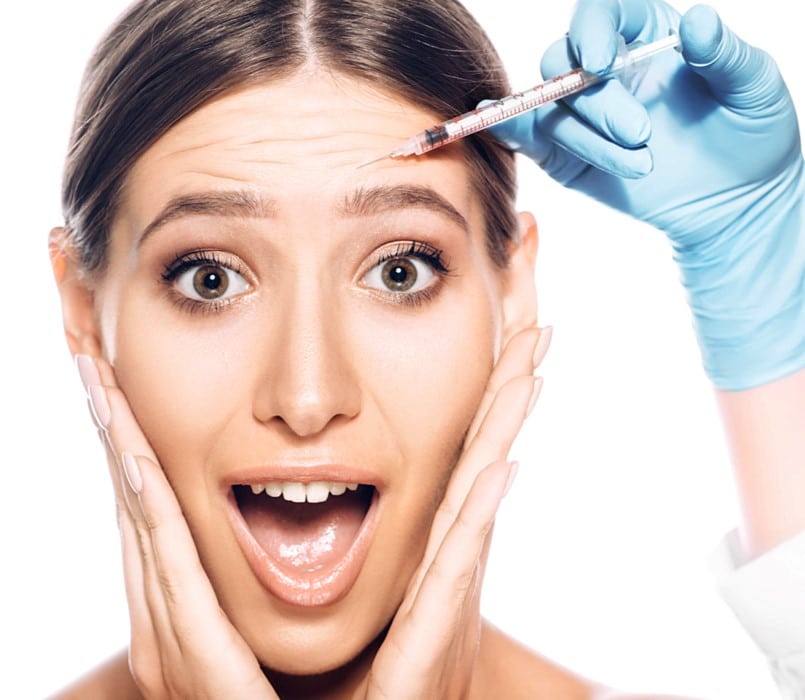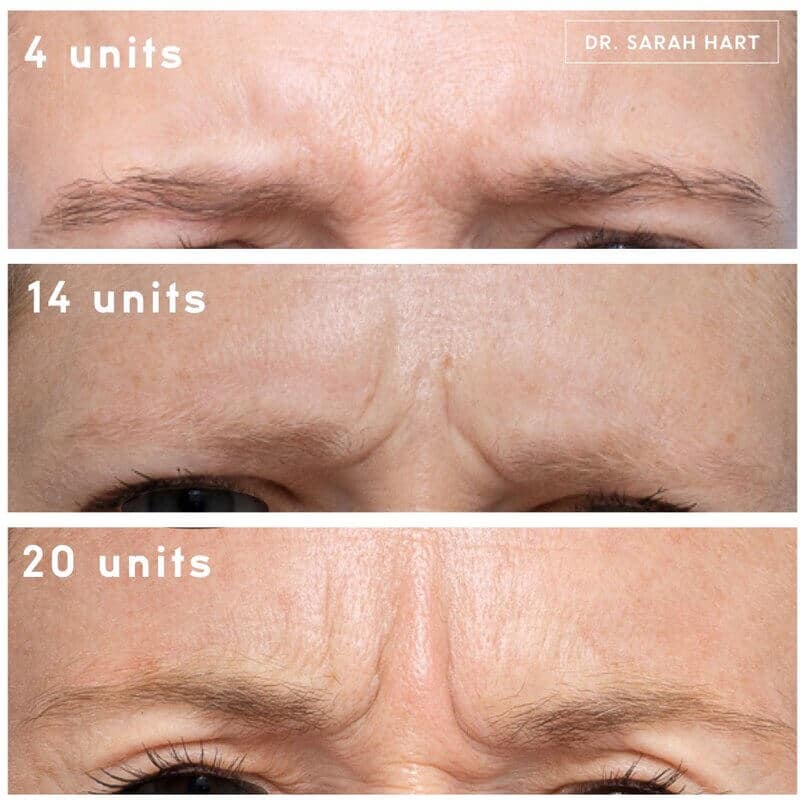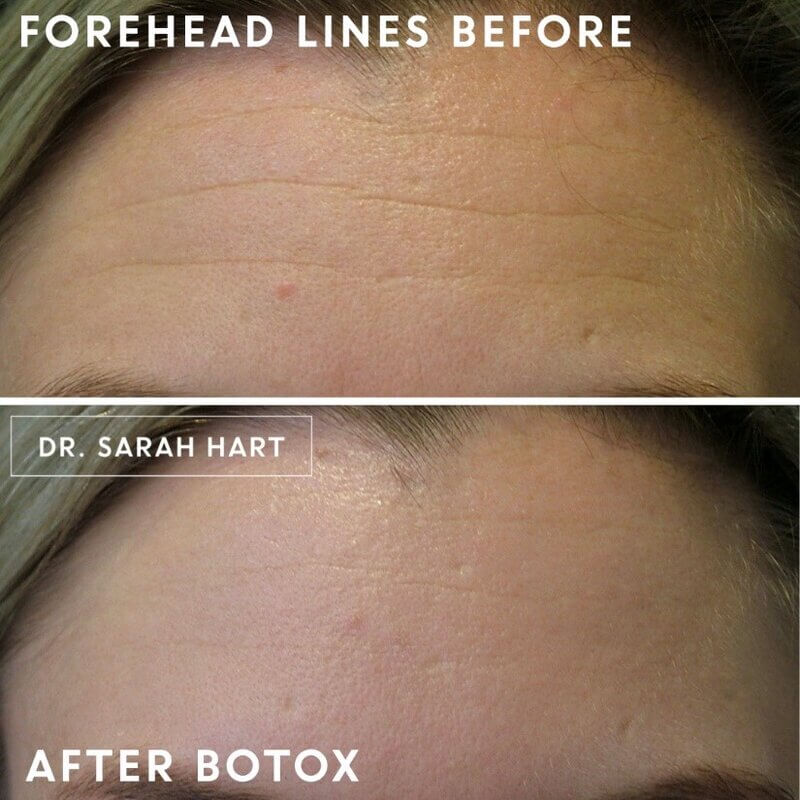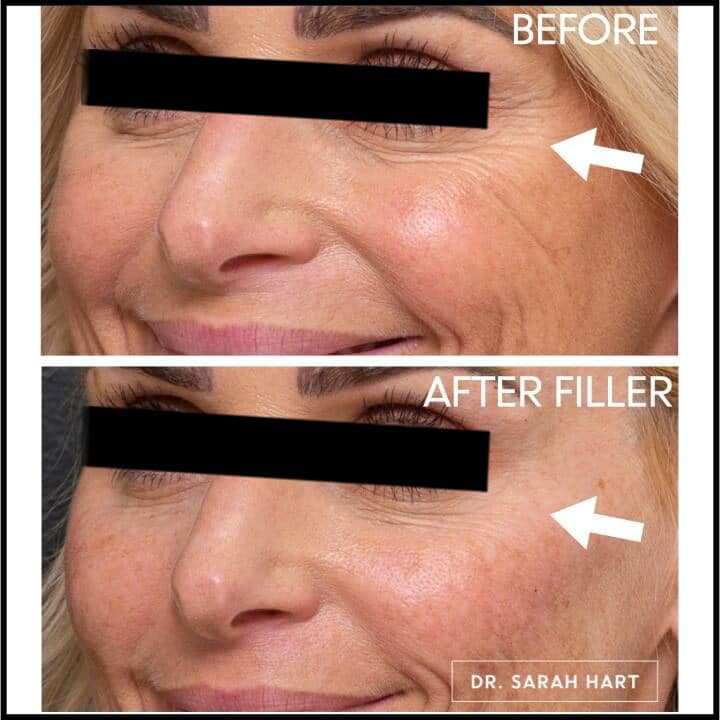Five Botox myths you should know about to get a better result
“Are you serious?” gasped my patient. “You’ll put only 14 units in my frown? But the other clinic said I must have 20 units, or it won’t work!”
I’ve heard this many times. You’re told 20 units is the only correct dose to treat a frown.
But is it true?
In my experience, no, it’s not.
This is just one of the common Botox myths that costs money and could stop you from getting the most natural result.
It’s not the only one.
Here are 5 Botox myths I’ve encountered over the years that I’d love to share with you.
Botox Myth 1: You must have 20 units in your frown
Where does this come from?
Actually, there’s good research behind the number twenty. Studies show that 20 units in the frown last a lot better than 10 units and almost as well as 30 units.1 So 20 is a sensible, efficient number, and I do treat many people with 20 units. Just not every person.
Just as our bodies are different shapes and sizes, the muscles in our faces vary in size and strength too. Some people have big strong frown muscles and others have small weak ones.
There are other variables too, like how long you’ve been having Botox or your age. Facial muscles tend to weaken when they’re not used, just like the muscles in our body.
This means that the right dose for your frown could be less than 20 units, especially if you’ve been having Botox for a couple of years.
My Botox dose for a frown ranges from as low as 4 u to as high as 30 u.
4 units are very low. When would I use that little?
Imagine a person with small frown muscles who wants to keep some ability to frown to express emotion. They would need only a slight weakening of a portion of their frown muscles. In this patient, 4 units is enough to weaken her frown for 10 weeks. This surprised me! I thought she would require much more. If I hadn’t dropped the dose, I would never have know such a tiny amount could have this effect.
It goes to show how variable the human body can be.
When would I use 14 units? A great example would be a 45-year-old woman who’s had regular Botox for the last five years. After repeated treatments, her muscles have “forgotten” how to frown. Now she only needs 14 units every four months.
So, when do I use the classic 20 units? Take a 40-year-old frowner having her first-ever treatment. With strong muscles and a goal of maximum effect, I’ll give her 20 units.
Even if you need 20 units for the first few treatments, I’m often able to reduce the dose to 14 to 16 units once you’ve lost the habit of frowning.
Will it last as long?
That’s an important question because how long your treatment lasts depends on the dose.
20 units are expected to last for 4 months. A smaller dose may wear off more quickly, and you might need treatment earlier than 4 months. Even so, when I chose the right person, I often find a lower dose holds for a full 4 months.
I’m not alone. Plastic surgeon Steven Liew agrees that 20 units are too much for many frowns, especially after a few years of regular treatments. He only gets 12 units in his own frown, and men usually need higher doses. After years of treatment, I get just 5 units in mine.
So why do other clinics have a 20 unit rule?
A one-dose policy is just simpler.
If you have a chain of clinics with high staff turnover and a limited budget for training, taking a “Macdonald’s” one-size-fits-all approach is sensible. I guess if you’re profit-focused, it might also sell more Botox.
That’s not how I operate.
I want my patients to look the best they can, and I think using more Botox than necessary does not look as good.
You won’t automatically get 20 units in your frown from me.
Years of delivering Botox has taught me how to predict who needs more and who needs less. I’ll suggest a dose tailored to your muscle strength, the effect you want, and how long you want it to last.
Other clinics can keep their MacDonald’s approach – it’s not for me. Human faces aren’t like hamburgers.
Botox Myth 2: Start before the line appears
Last week a 22-year-old asked me if she should start having Botox “to prevent lines. All my friends are doing it before they have lines. I don’t know why. They just feel they have to.”
Did she have any lines? None at all.
Does she need Botox? No, she doesn’t!
I don’t agree young women need to start using it before they even see a line. Sure, it’s a great way to expand your customer base, if that’s the way you think. But it’s not necessary and I’m sure most 22-year-old women have better things to spend their money on.
Ok, if you have obvious resting lines between your brows at 21 and deep frown lines run in your family, then early Botox is justified, if you wish to avoid the family scowl. But if you don’t see a line at rest, then you don’t need Botox.
Let me repeat… If you don’t see a line at rest, you don’t need Botox
There’s no need to start before you can see a line at rest because Botox is very effective at improving lines. It’s completely capable of erasing a faint “static” line.
Wait until you see a line that that sits there when you’re not moving your face. It doesn’t have to be a deep line, but it should be just visible.
Personally, I also think starting full-dose Botox too early could shrink your facial muscles too much, which could make you look older later down the track.
So, what should a line-free 22-year-old be doing to prevent wrinkles?
In NZ, I believe sunscreen is the most important preventative, along with hats, sunglasses, and beach umbrellas.
Sun is still the number one culprit for ageing our skin.
Botox Myth 3: You don’t need to see the same injector every time
Do you attend a clinic where the injectors change as fast as Auckland weather?
Do they tell you it doesn’t matter who does your treatment, you can see anyone, and they can follow the same pattern? Yeah, Nah… I don’t agree.
Botox is an art and a few millimetres difference in injection location can make a big difference to your result.
Years ago, I learned a really good lesson.
My boss had gone on holiday and I was treating his patients. He’d drawn diagrams of his previous injection patterns in the notes. The diagram for one patient seemed pretty likely to drop her brows to me, but since it had worked for him, I followed it. Disaster! Sure enough, two weeks later her brows were flat.
I kicked myself. I should have followed my instincts. His diagram made sense to him and worked well, but obviously, my interpretation was a few millimetres different.
Yes, even a few millimetres difference in injection points is enough to drop your brows instead of lifting them or alter your smile when blending the “bunny scrunch” part of your frown.
Detail is everything for getting a great result and injectors develop their own style. Mine is “super-natural, look-like-yourself, can-still-lift-your-eyebrows”.
Find an injector that has a style that suits you and stick with them.
Good Botox is art, just like a good haircut or brow tattoo.
Botox Myth 4: If it’s not frozen it’s not working.
Botox means frozen, yes?
Your face should be mirror-smooth with zero ability to frown or lift your brows, otherwise, it’s not enough and it needs a top-up. No, nope, wrong!
Years ago, frozen faces were quite common. Many took the “American” approach of bigger is better and smashed those muscles hard.
This eradicated all movement in the target muscles leading to a blank smile and no eyebrow raises.
Then the French got hold of Botox and applied their stylish taste, sprinkling it around gently. This helps the treated area blend seamlessly with a gentle gradient of movement rather than patches of paralysis.
I much prefer this approach. I think a face that moves is genuinely more beautiful, especially with happy emotions. Faces look better when you keep a little crinkle at the corner of the eyes when smiling.
Less is more, and it’s also more cost-effective. You’ll see fewer lines, but still, be able to lift your brows to say a Kiwi hello.
Subtle sprinkles of Botox can work wonders. Let’s kick the frozen look to the side-line.
Botox Myth 5: Botox is for wrinkles and filler is for making lips bigger.
This one is true. But it’s not the whole truth.
Botox is absolutely my first go-to for frown lines, forehead lines and crow’s feet. There’s nothing like it for fading these wrinkles.
But when a sprinkle of Botox doesn’t improve your lower crow’s feet, do I reach for more Botox? Nope.
More Botox here leads to a hollow at the eye corner and weird bunching of skin when you smile, called “shelving”. Instead, it’s time for filler.
When I see the lower crows stretching down the cheek towards the smile lines, that tells me your face has lost fat. We call this “volume loss”.
Our face loses fat as we age, and it shows up earlier if you’re really lean.
Filler is a great replacement for fat. Adding a little filler also helps subtly relax the same muscles we target with Botox, without completely stopping movement.
Gently influencing muscle action in this way is called “myomodulation” and it means filler can be used to enhance your Botox result for an even more natural-looking improvement.
Here’s my patient smiling. She doesn’t like her lower crow’s feet, but she already has some fat loss around her eye with slight hollowing, so I didn’t want to risk making this worse with Botox. Instead, I placed filler in her cheek to lift and support the muscle around the eye. You can see that her skin is hydrated, and her crow’s feet are improved without any “shelving”.
Filler can be a wonderful addition to improve lines that keep your face in balance and avoids the temptation to use too much Botox.
I hope you’ve found learning about these five myths useful.
I’m passionate about using injectables in the most artistic and tasteful ways possible.
Botox is a mixture of art and science, and most of the time, less is more. I think that knowing this will help you get a more natural-looking result and could even save you money.
Botulinum toxin is a prescription medicine for the treatment of frown lines, horizontal forehead lines, and crow’s feet. Botulinum toxin injections have risks and benefits. Ask your doctor if botulinum toxin injections are right for you. For product information, check with your doctor.
Botox® is a Prescription Medicine containing 100 units of botulinum toxin type A for injection. It is used for the treatment of frown lines, forehead lines and crow’s feet. It should be administered only by trained medical professionals. Talk to your specialist about the benefits/risks of this procedure in appearance medicine. Cautions: People with defective neuro-muscular transmission disorders, infection at site of injection, glaucoma, pregnancy and lactation. Possible side effects include headaches, pain, burning/stinging, bruising, swelling or redness at the injection site, local muscle weakness including drooping eyelids/eyebrows, swollen eyelids, skin tightness, tingling sensations, itchiness, nausea and flu like symptoms. If you have any side effects or concerns speak to your doctor. You will need to pay for this medicine. Normal Doctors visit fees apply.
Note: BOTOX® treatment lasts about four months and after this time further courses of treatment may be necessary. Speak to your specialist about your own situation








